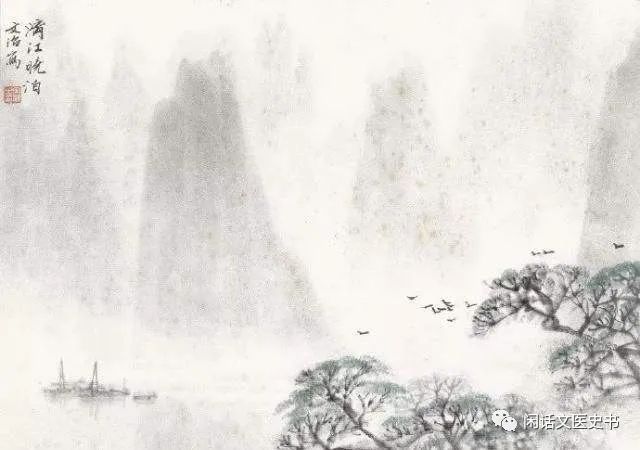A Brief Overview of the Eight Principles in TCM Diagnosis

In treating diseases, the Eight Principles of Yin-Yang, Exterior-Interior, Cold-Heat, and Deficiency-Excess are very important.
The Eight Principles are primarily based on Yin-Yang. The Exterior, Excess, and Heat are associated with Yang, while the Interior, Deficiency, and Cold are associated with Yin. Therefore, understanding Yin-Yang is crucial. The Huangdi Neijing (Yellow Emperor’s Inner Canon), in the chapter Suwen (Plain Questions), states: “A good diagnostician observes color and pulses, first distinguishing Yin from Yang.” This means that a skilled diagnostician, through observation and pulse diagnosis, first differentiates Yin from Yang. We can extend this to all diagnostic methods, including observation, listening, inquiry, and palpation, where the first step is to distinguish Yin from Yang. Why is it important to first differentiate Yin from Yang? Because Yin-Yang is the overarching principle. The Ming dynasty physician Zhang Jingyue stated in his work Jingyue Quanshu: “Although the medical path is complex, it can be summarized in one phrase: Yin-Yang.” In other words, while the medical field is vast, it can be encapsulated in the concept of Yin-Yang.

The Exterior-Interior distinction refers to the location of the disease, generally divided into three categories: Exterior, Interior, and Half-Exterior Half-Interior. This is relatively easy to identify; in the case of Exterior, there are symptoms of aversion to cold and fever, a thin white tongue coating, and a floating pulse. Half-Exterior Half-Interior presents alternating cold and heat symptoms. If there are no symptoms of fever and aversion to cold, it indicates an Interior condition.
In general, when treating diseases, the distinction between Exterior and Interior is relatively straightforward, and cases of Exterior syndrome are not very common; if they do occur, they are usually related to colds, coughs, or asthma during acute episodes. Interior syndromes, however, are much more complex.
In treating any disease, it is crucial to differentiate between Cold-Heat and Deficiency-Excess.
Cold is treated with warming herbs, while Heat is treated with cooling herbs. For Deficiency conditions, tonifying herbs are used, whereas for Excess conditions, purging herbs are employed. The Dao De Jing states: “Supplement the insufficient and drain the excess,” meaning that for Deficiency, one should replenish what is lacking, and for Excess, one should drain what is in excess. This is an excellent interpretation of treating Deficiency and Excess. What do we mean by Deficiency and Excess? The Huangdi Neijing, in the chapter Suwen (Plain Questions), provides guidance: “When pathogenic Qi is strong, it is Excess; when vital Qi is depleted, it is Deficiency,” thus we must drain the excess and replenish the deficiency.

So, how do we differentiate between Cold-Heat and Deficiency-Excess?
To differentiate Cold-Heat, we observe the tongue coating; to differentiate Deficiency-Excess, we assess the pulse.
In summary: the tongue coating’s moisture indicates Cold, while dryness indicates Heat; a strong pulse indicates Excess, while a weak pulse indicates Deficiency. Thus, a moist tongue coating suggests Cold, while a dry coating suggests Heat, as Heat depletes body fluids. A moist coating indicates that body fluids are intact, suggesting no Heat, hence Cold. A dry coating indicates fluid depletion, suggesting Heat. Therefore, we differentiate Cold and Heat based on the tongue coating. When pathogenic Qi is strong and vital Qi is not deficient, the pulse is strong. When vital Qi is deficient, the pulse is weak.
Thus, in treating diseases or observing any symptoms, it is essential to first differentiate Cold-Heat and Deficiency-Excess, as this is crucial for prescribing herbs and determining treatment efficacy. Additionally, considering the organs, six channels, Wei Qi, Ying Qi, blood, and San Jiao will provide further clarity and improve treatment outcomes.

In conclusion:
The Eight Principles: Yin-Yang, Exterior-Interior, Cold-Heat, Deficiency-Excess.
Yang: Exterior, Excess, Heat. Yin: Interior, Deficiency, Cold.
Exterior: aversion to cold and fever, thin white tongue coating, floating pulse. Half-Exterior Half-Interior: alternating cold and heat. Interior: neither Exterior nor Half-Exterior Half-Interior, indicating Interior.
Cold: moist tongue coating. Heat: dry tongue coating.
Deficiency: weak pulse. Excess: strong pulse.
This is a brief discussion on the Eight Principles of Diagnosis, presented here for everyone.
Finally, I wish everyone abundant vitality and well-being…

2023.10.22 Written in Beijing

